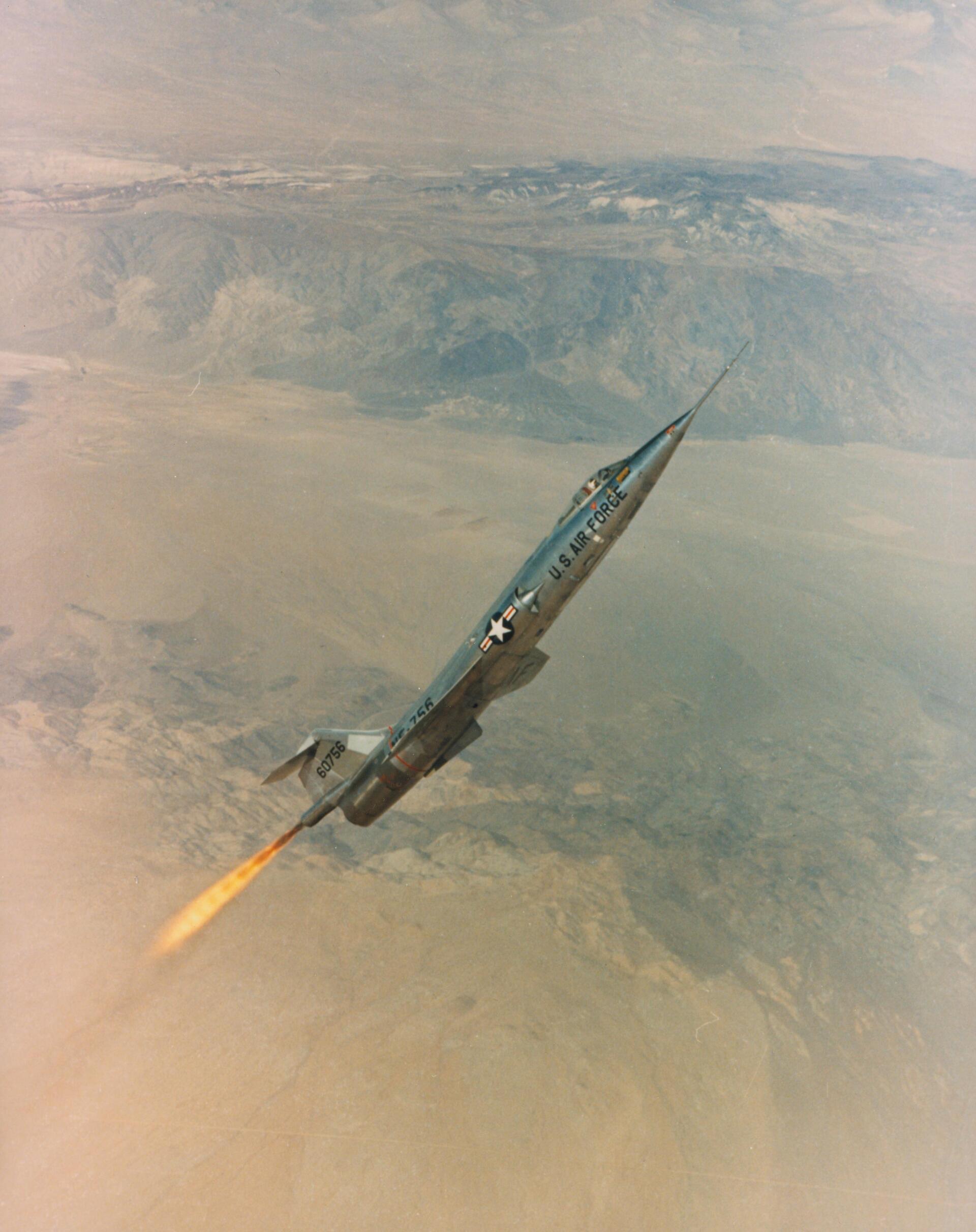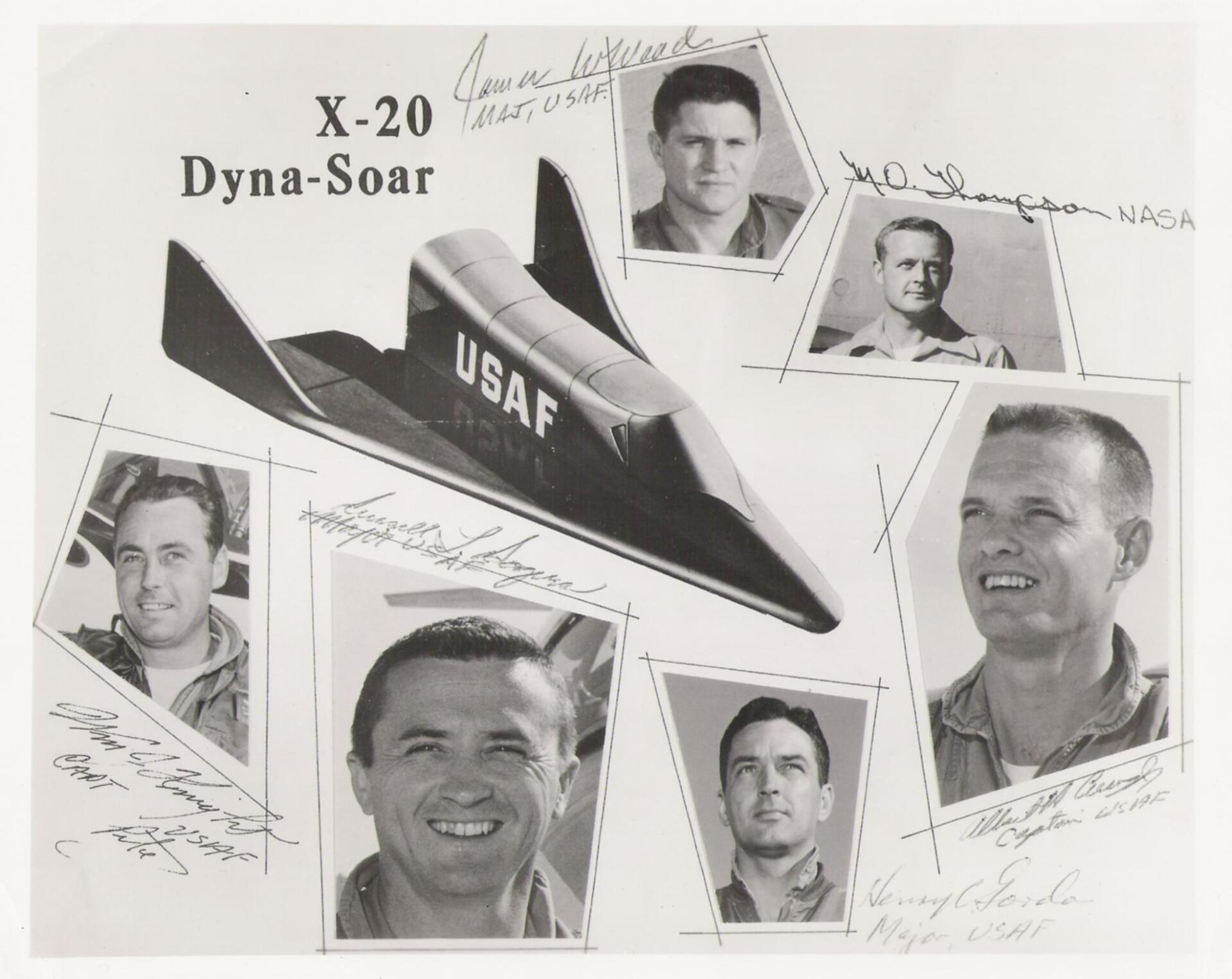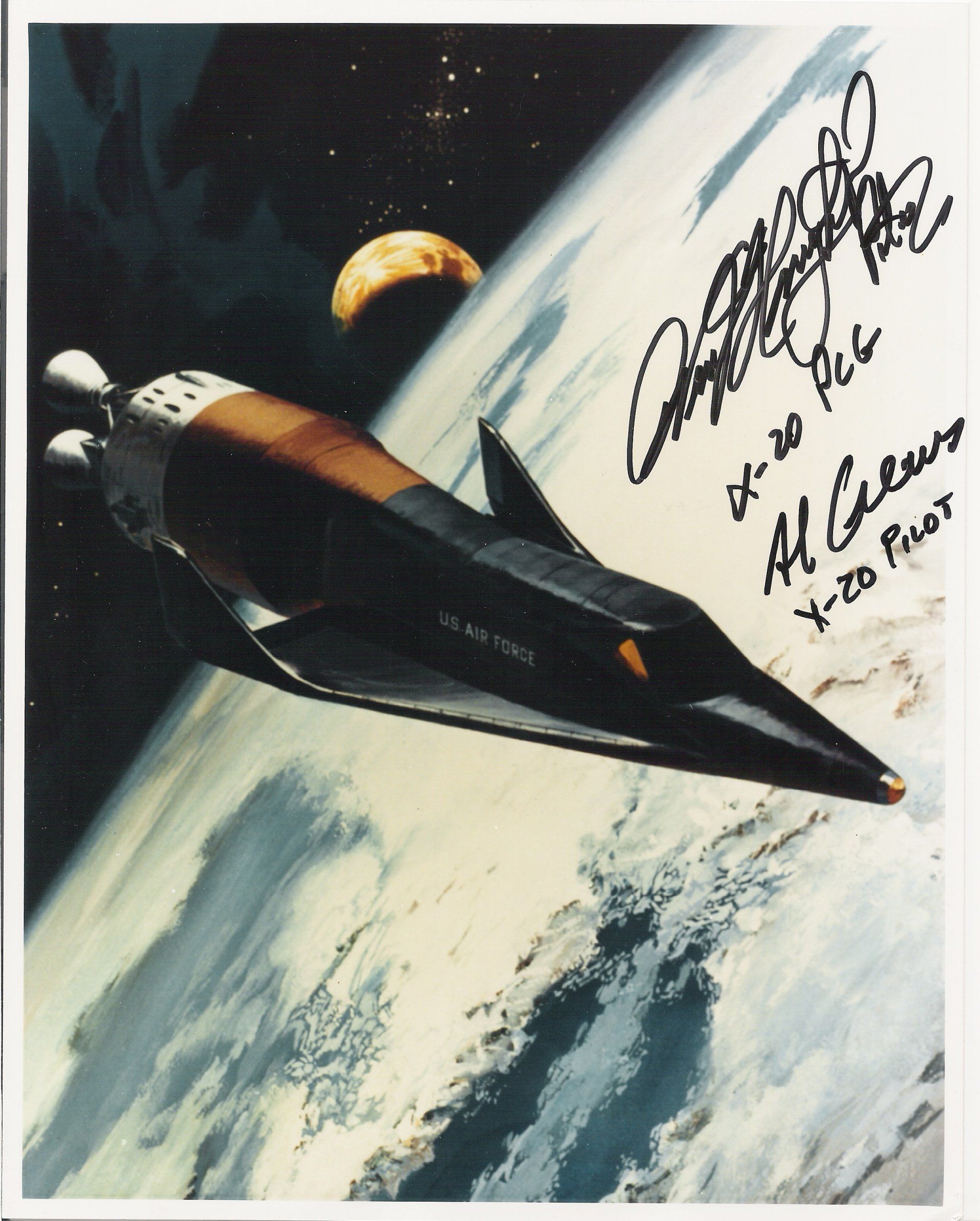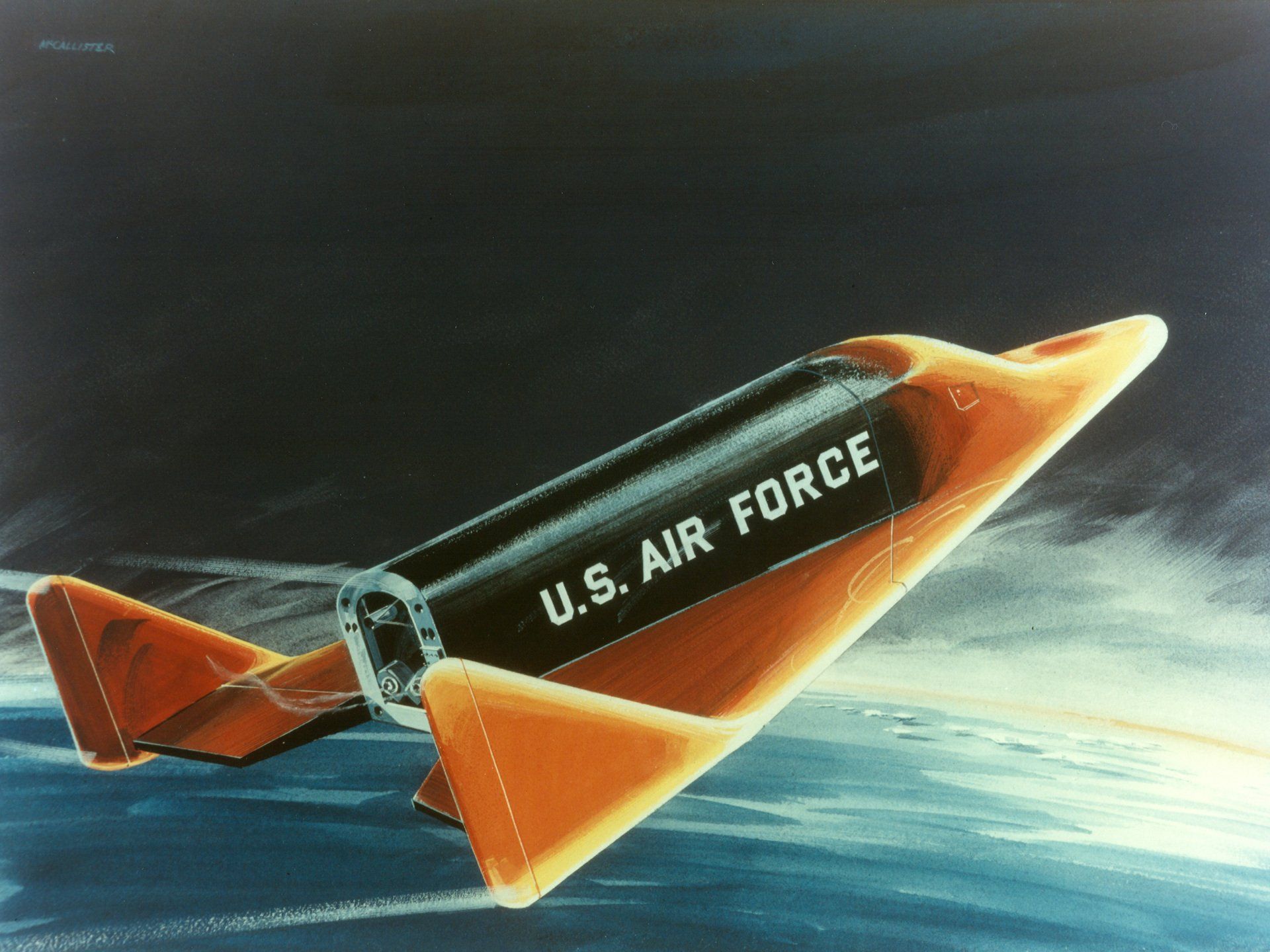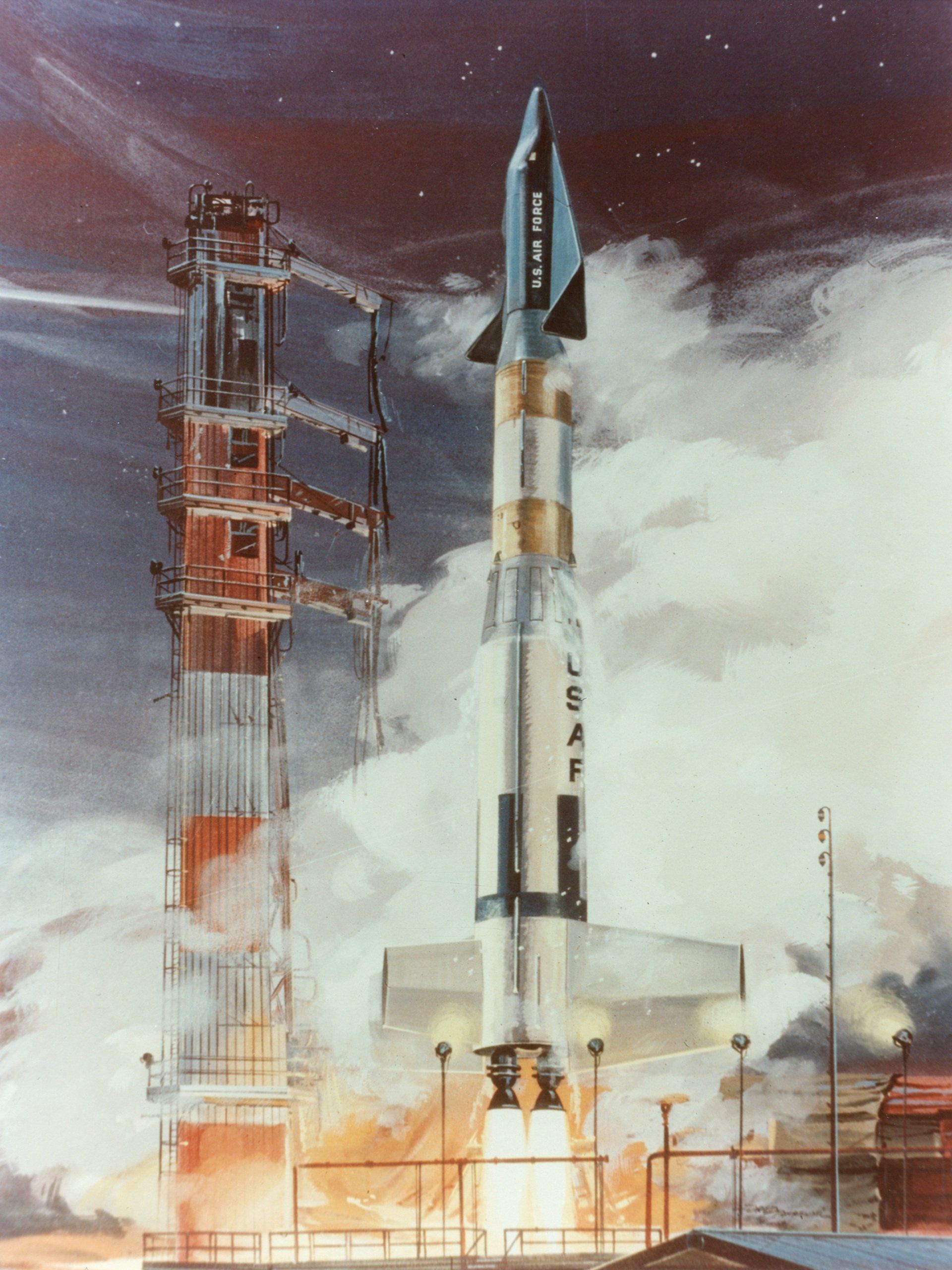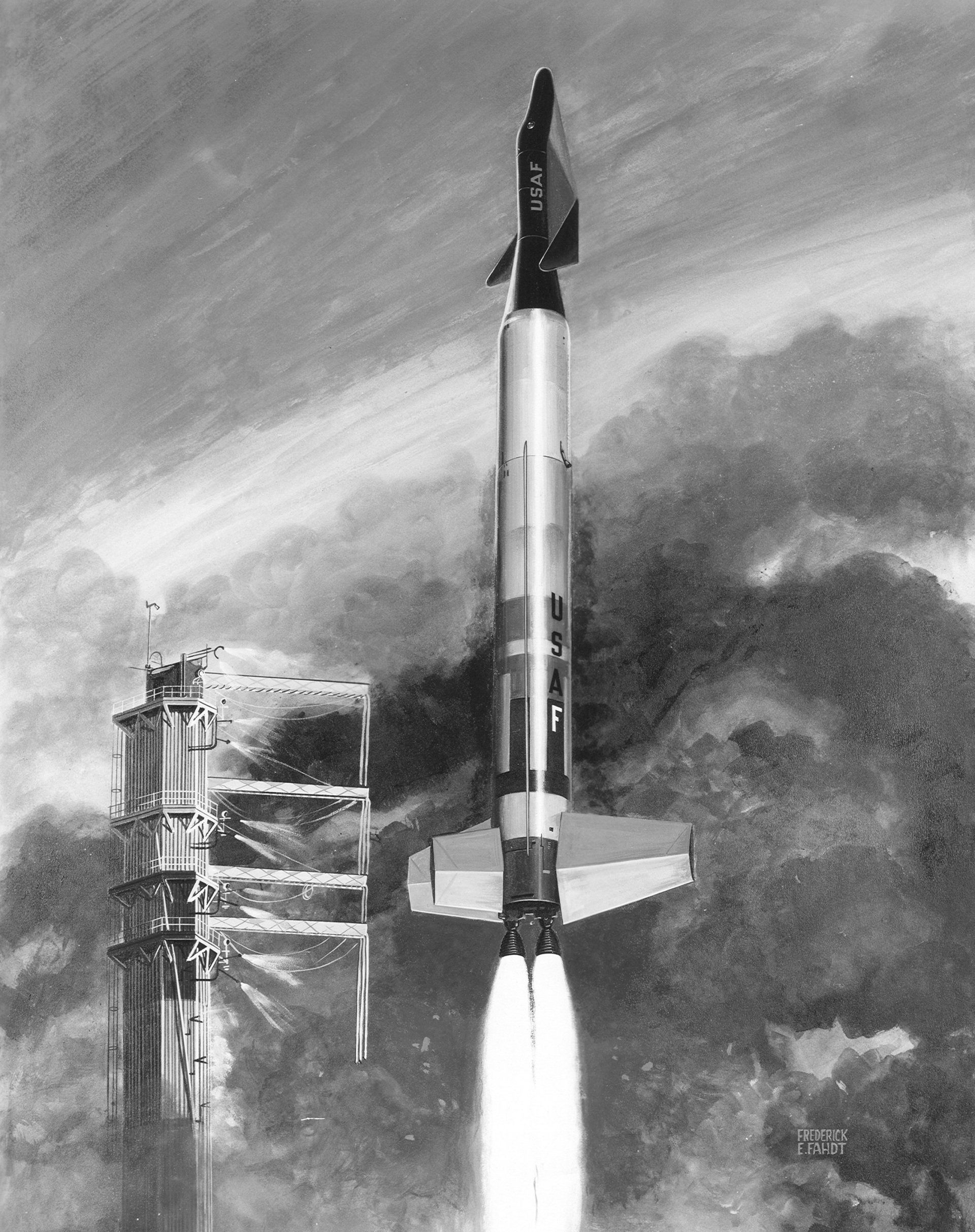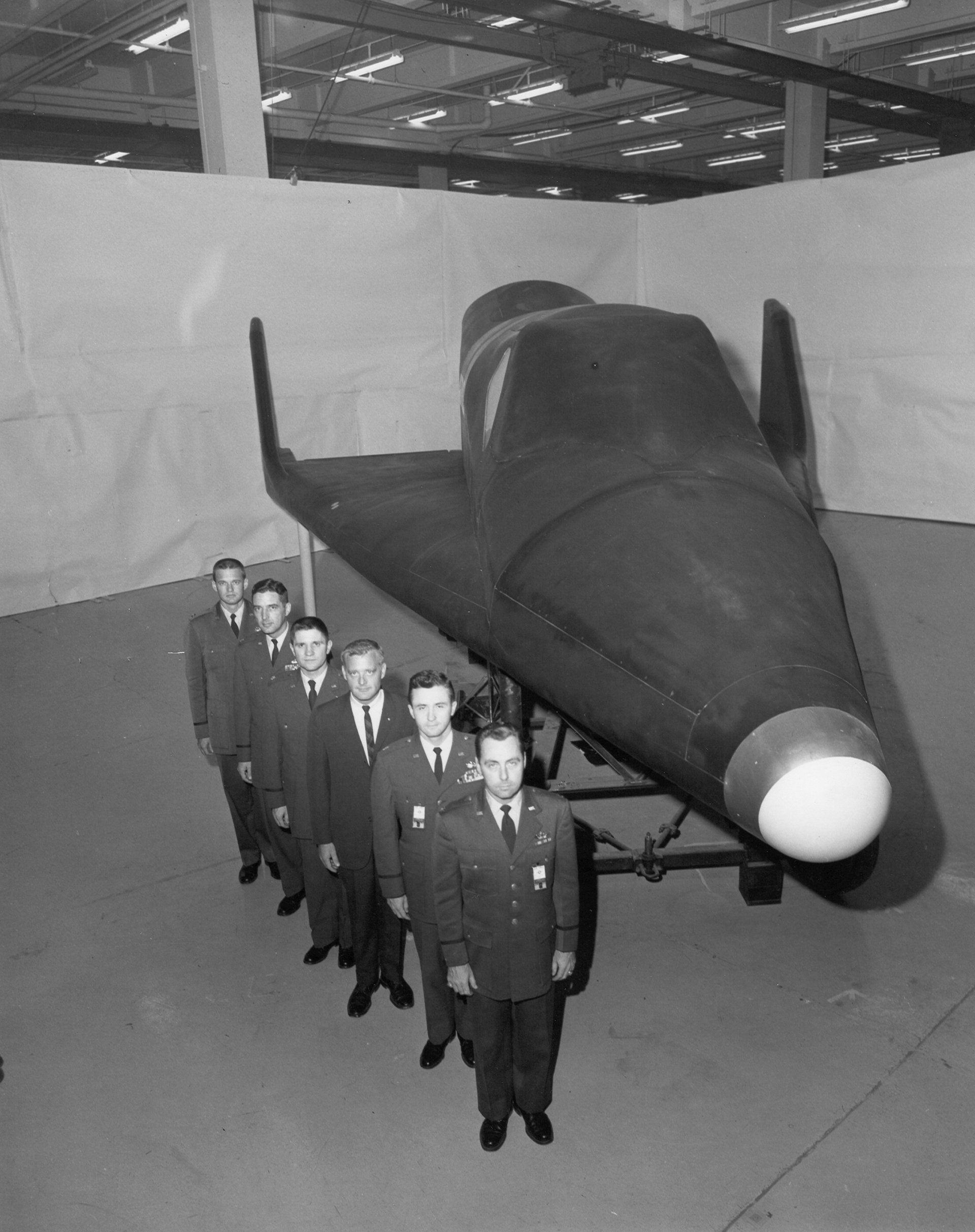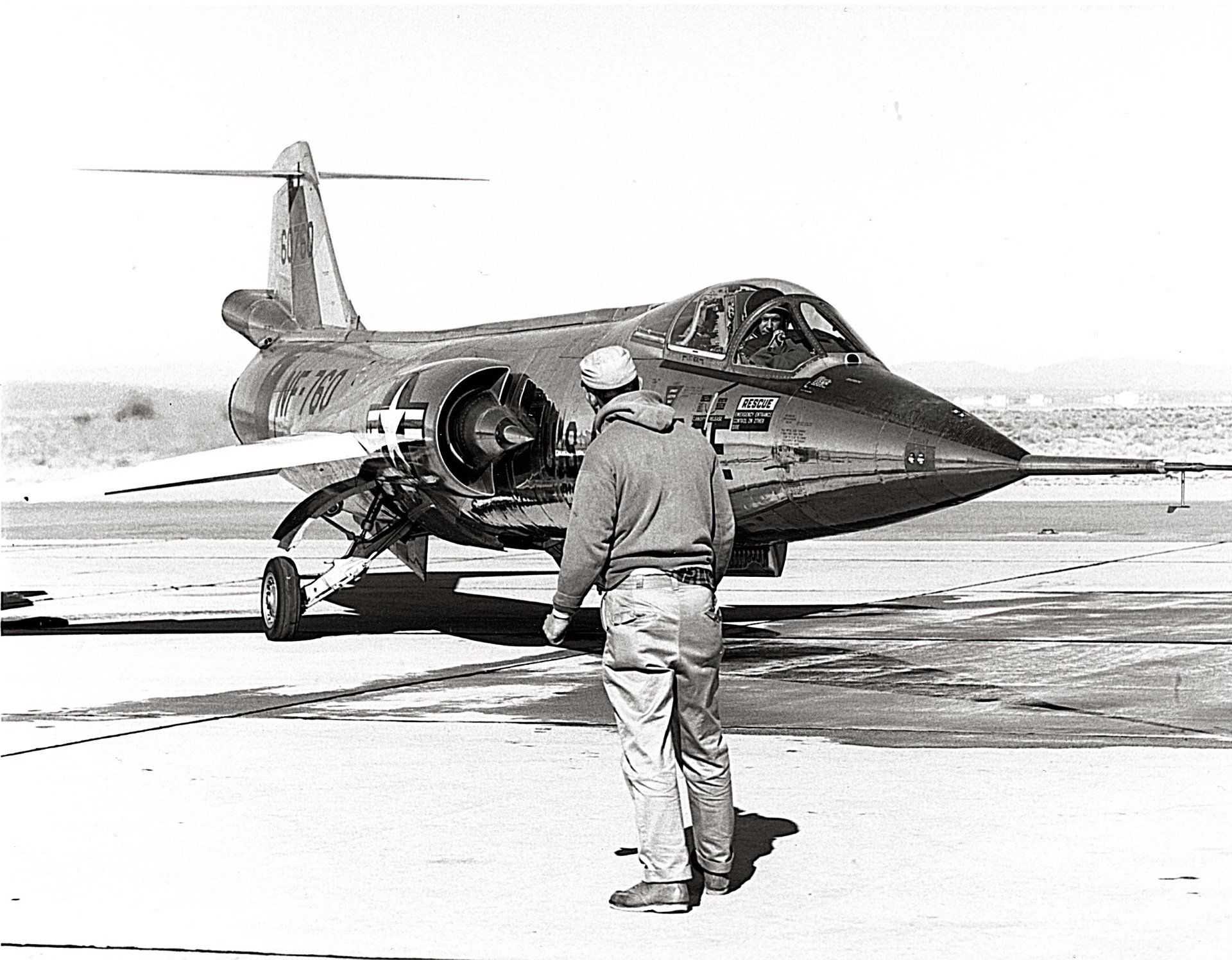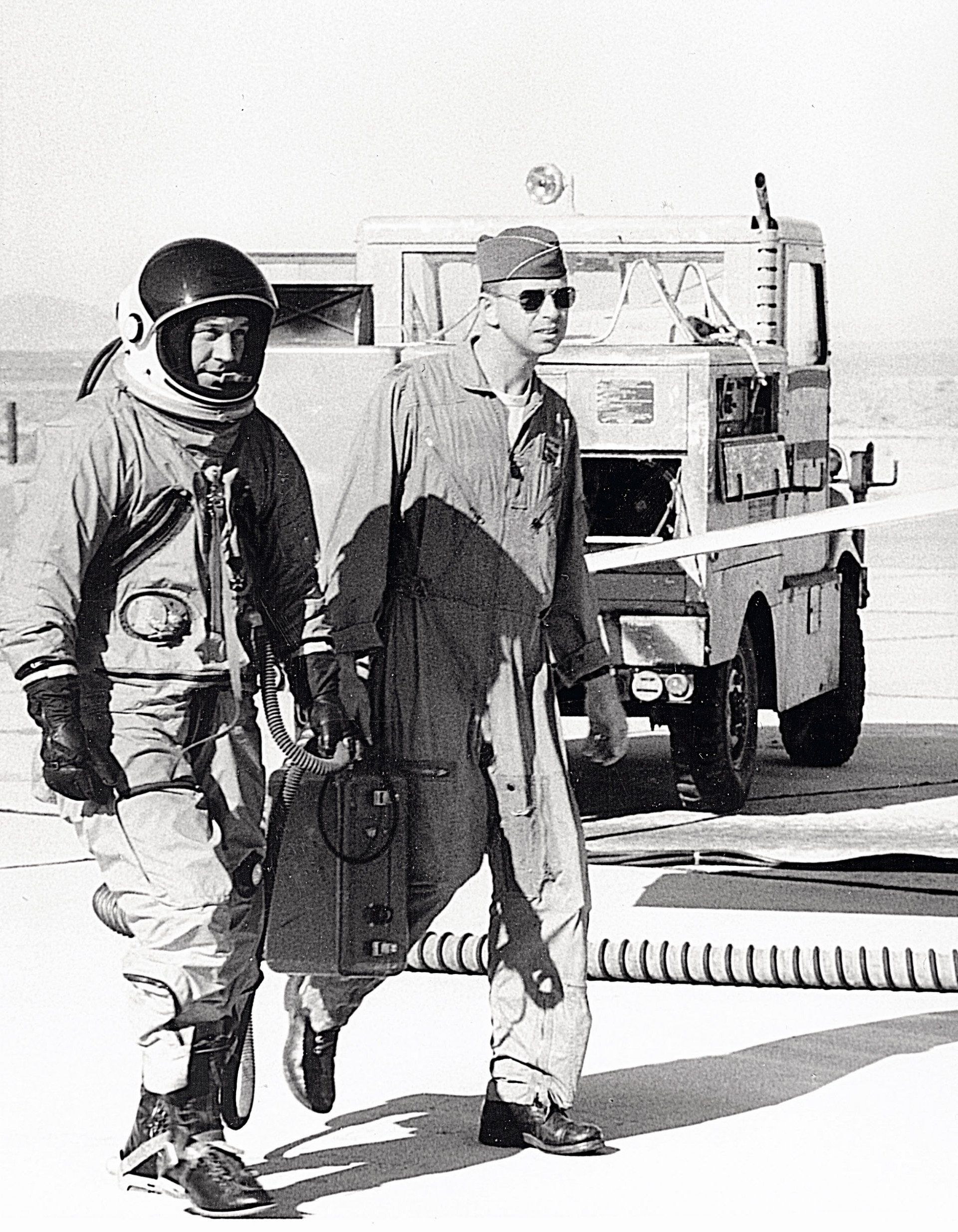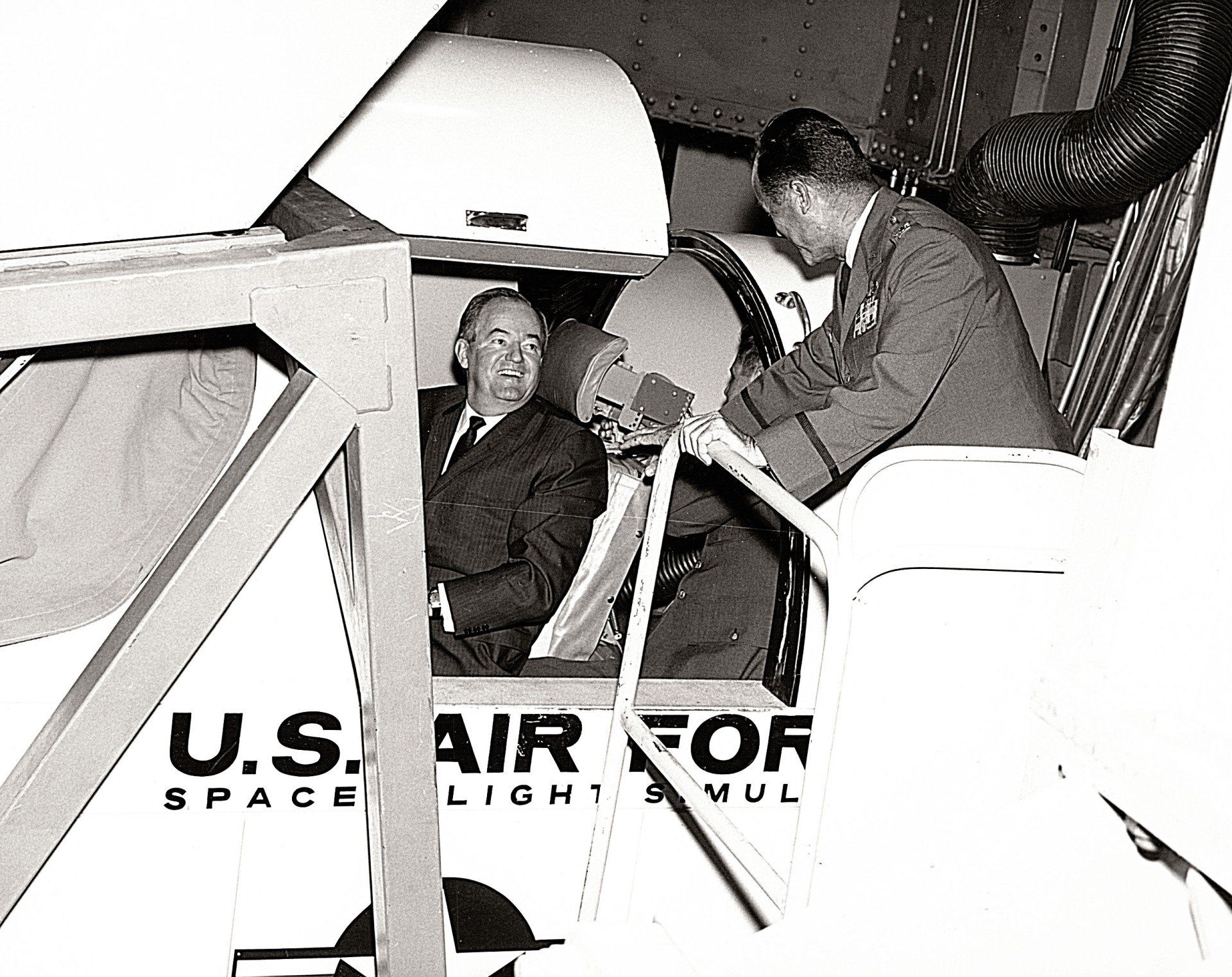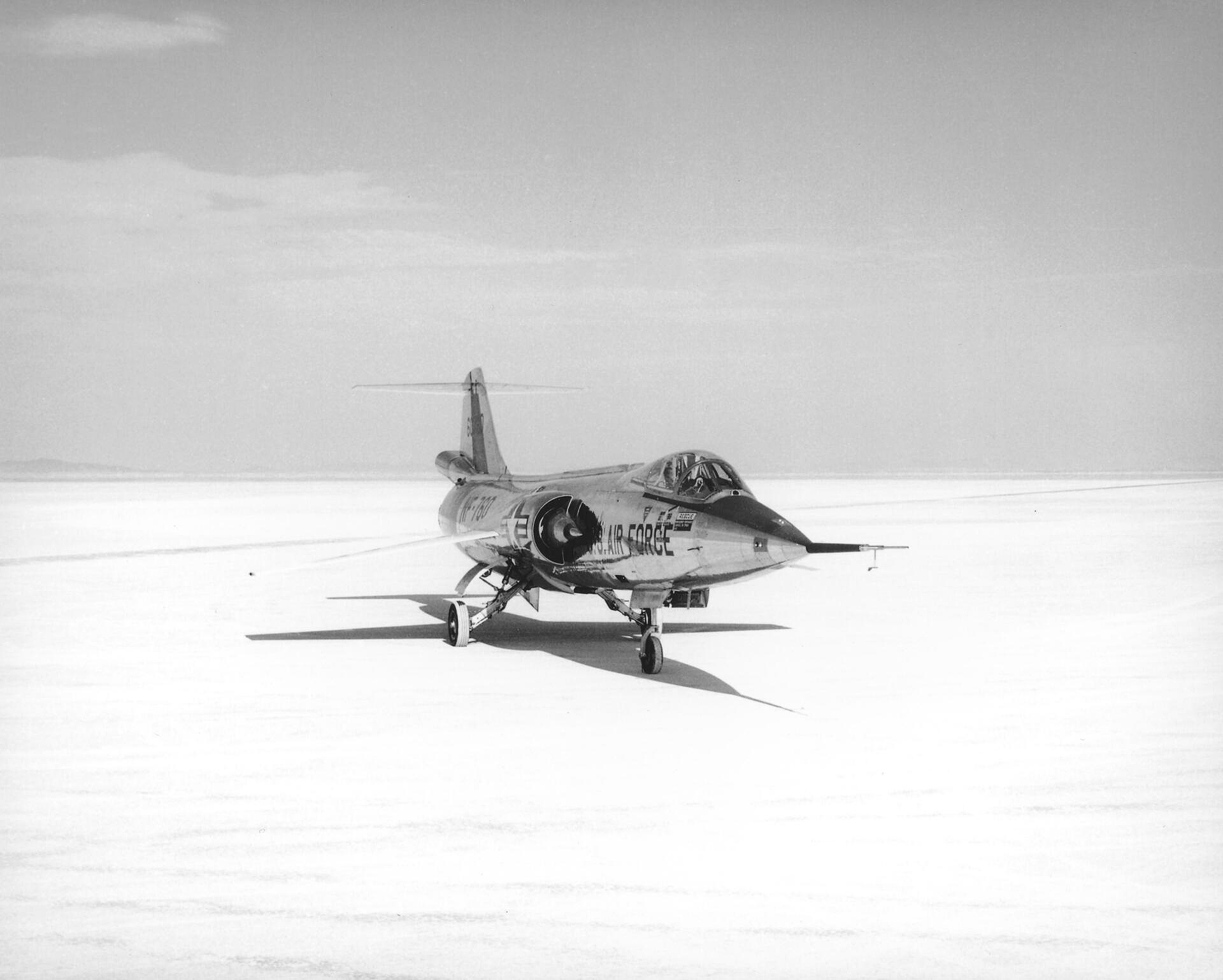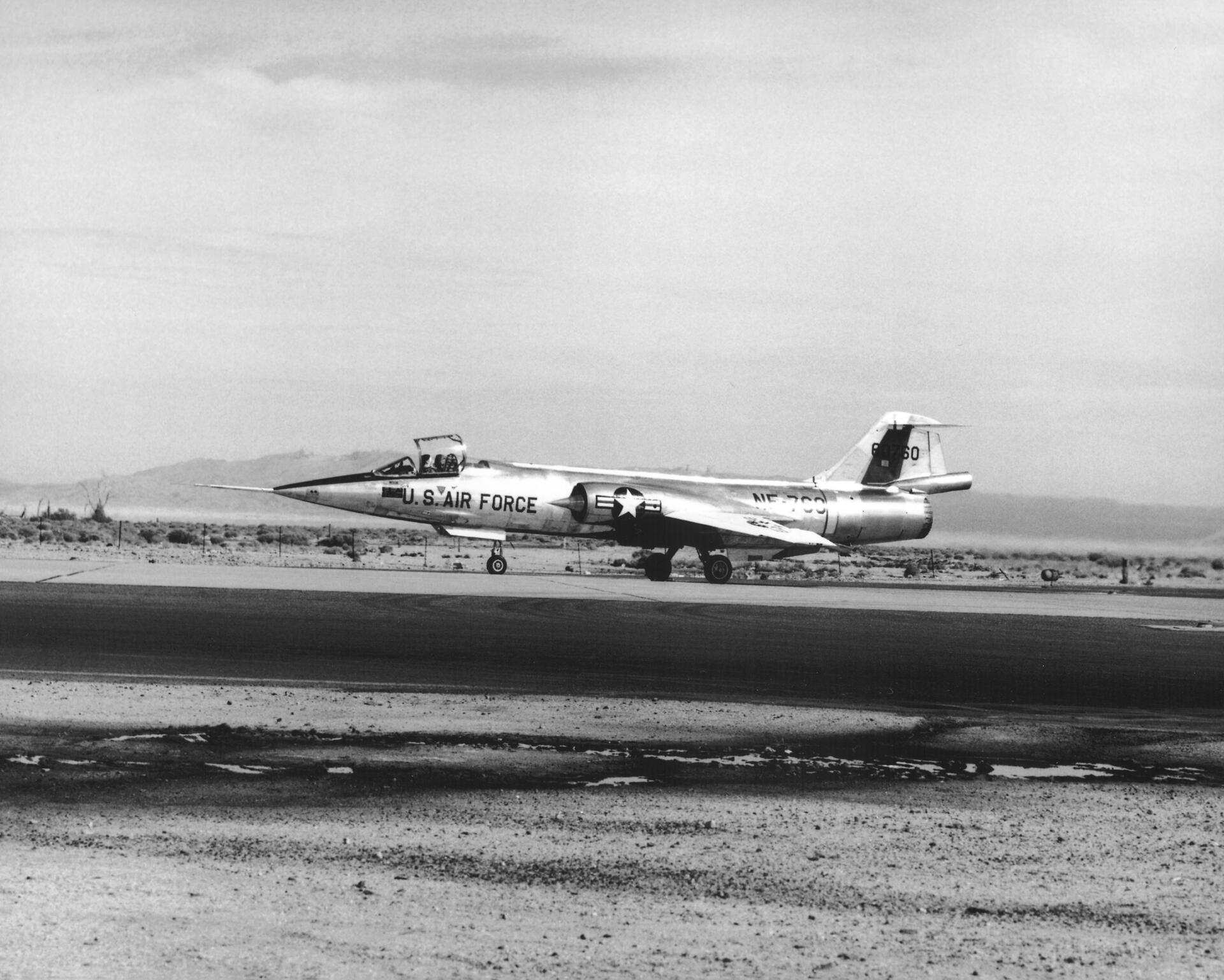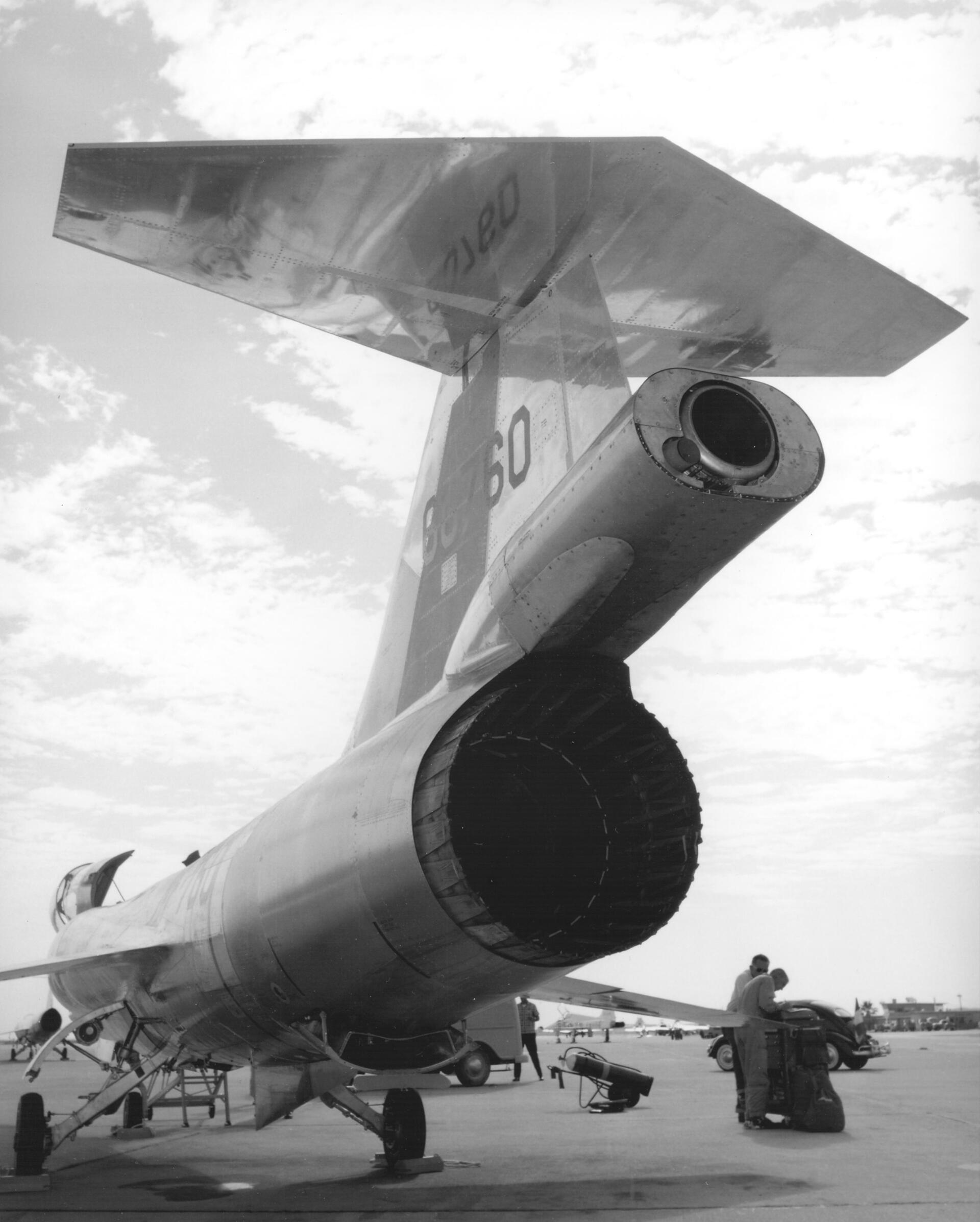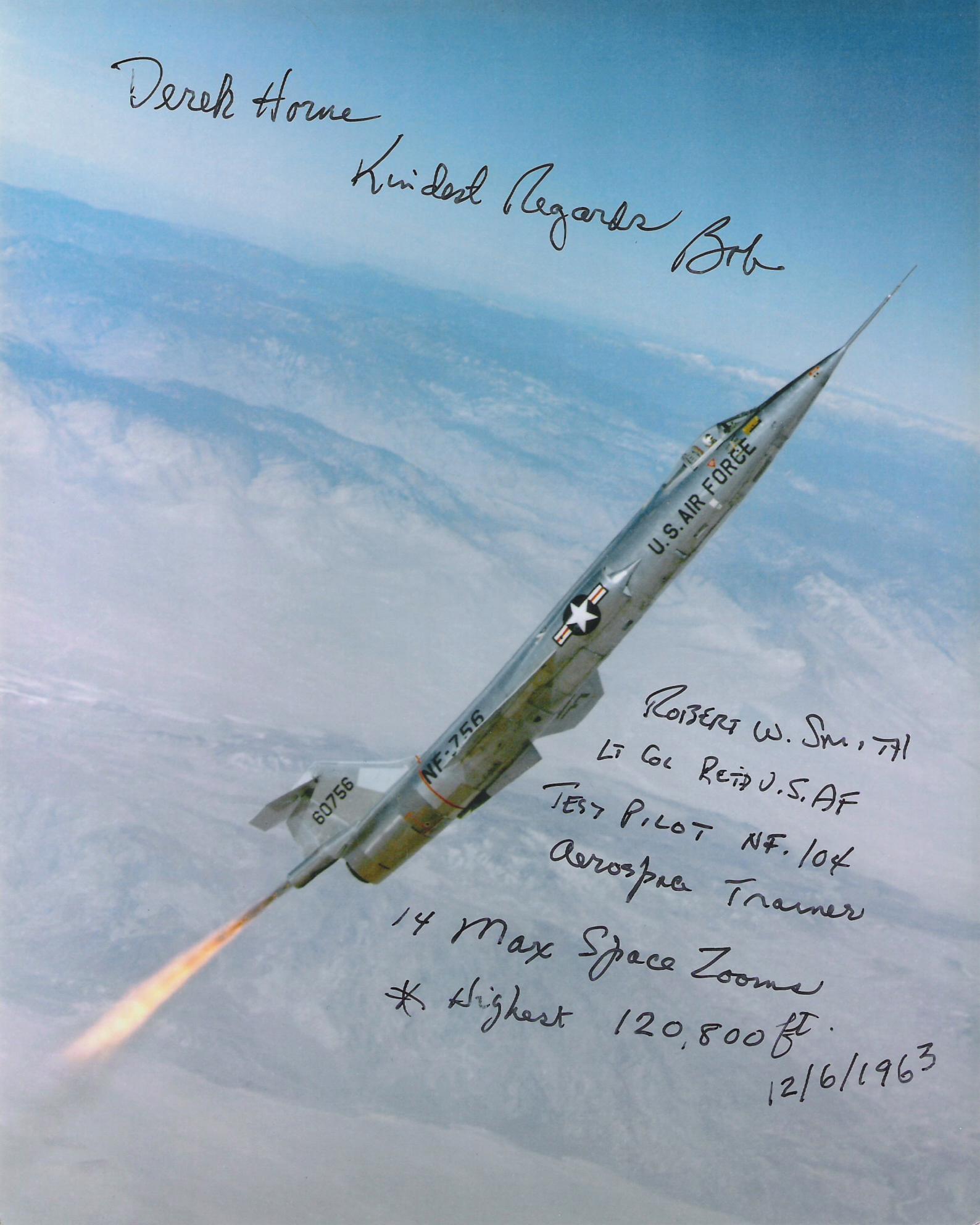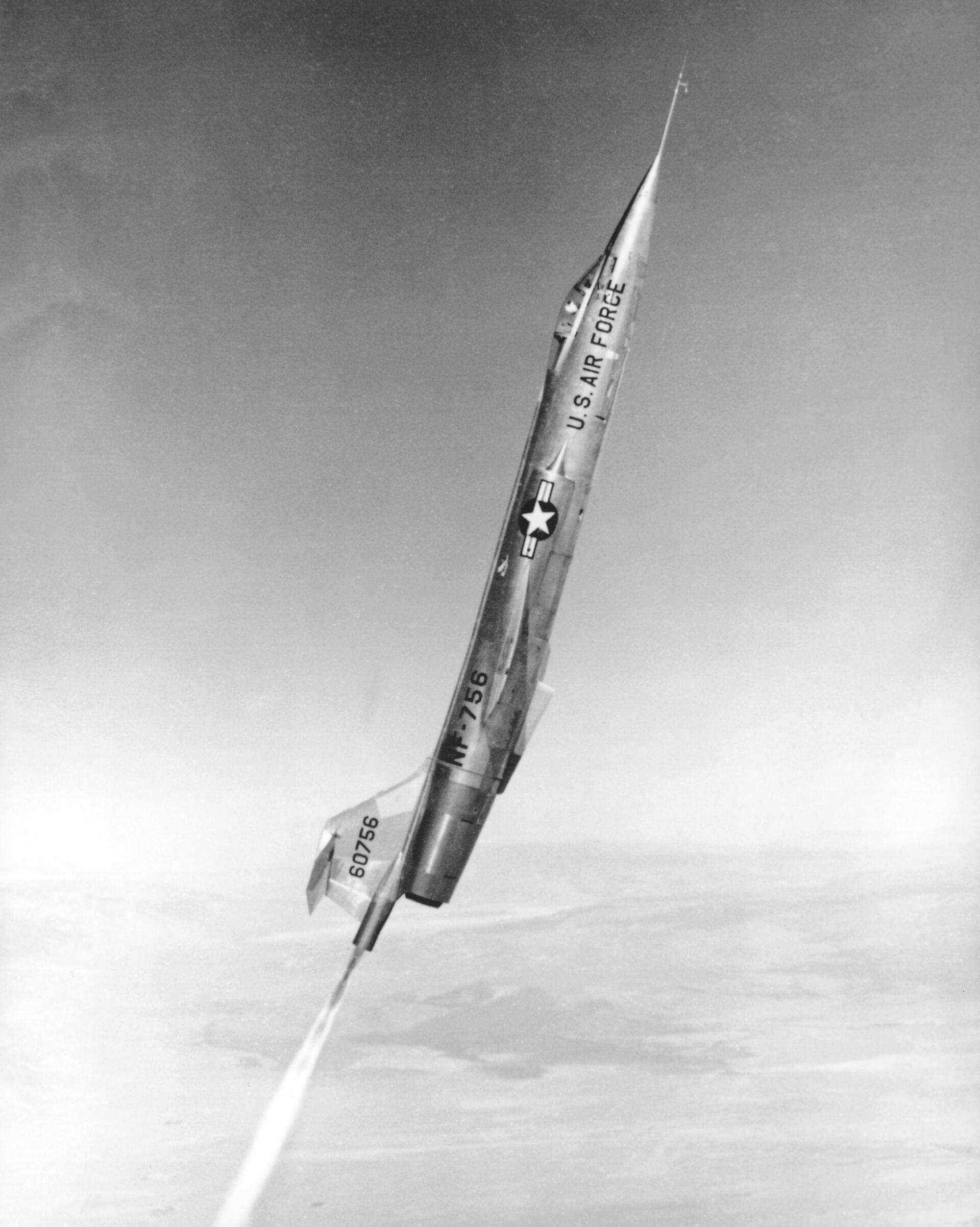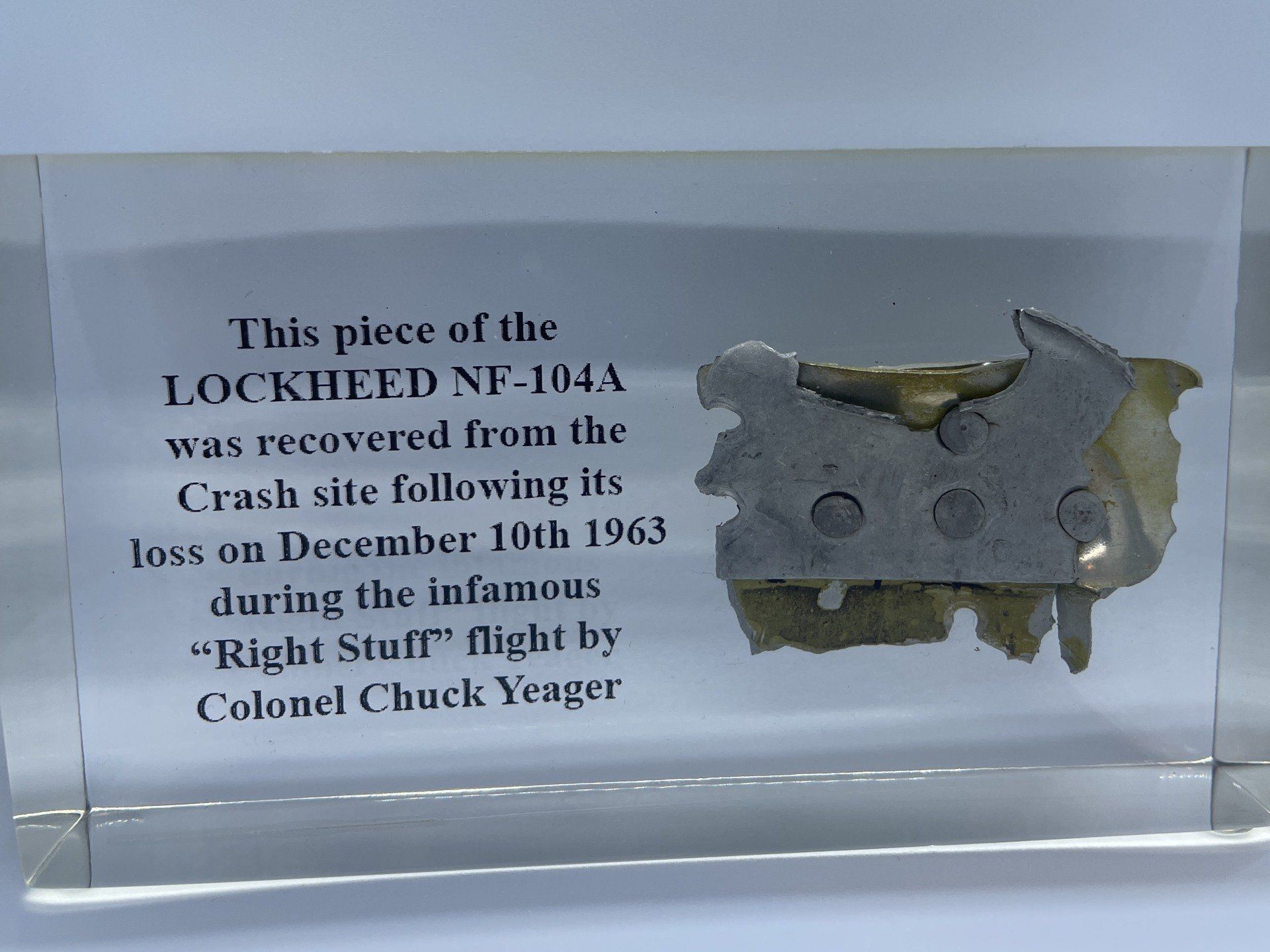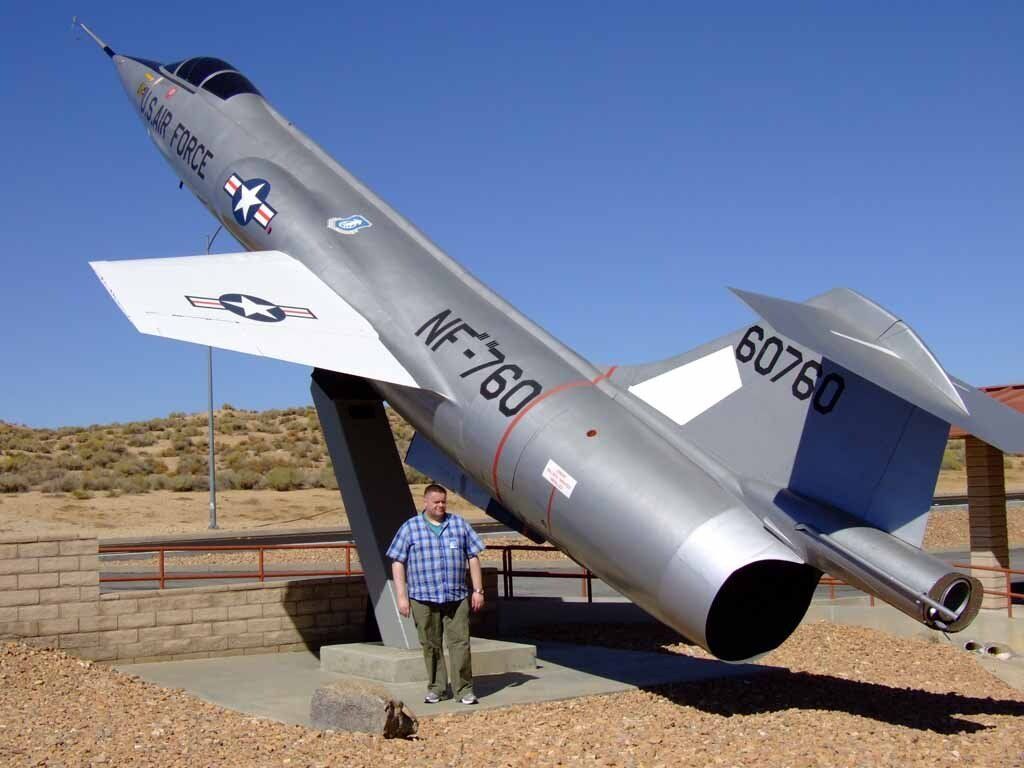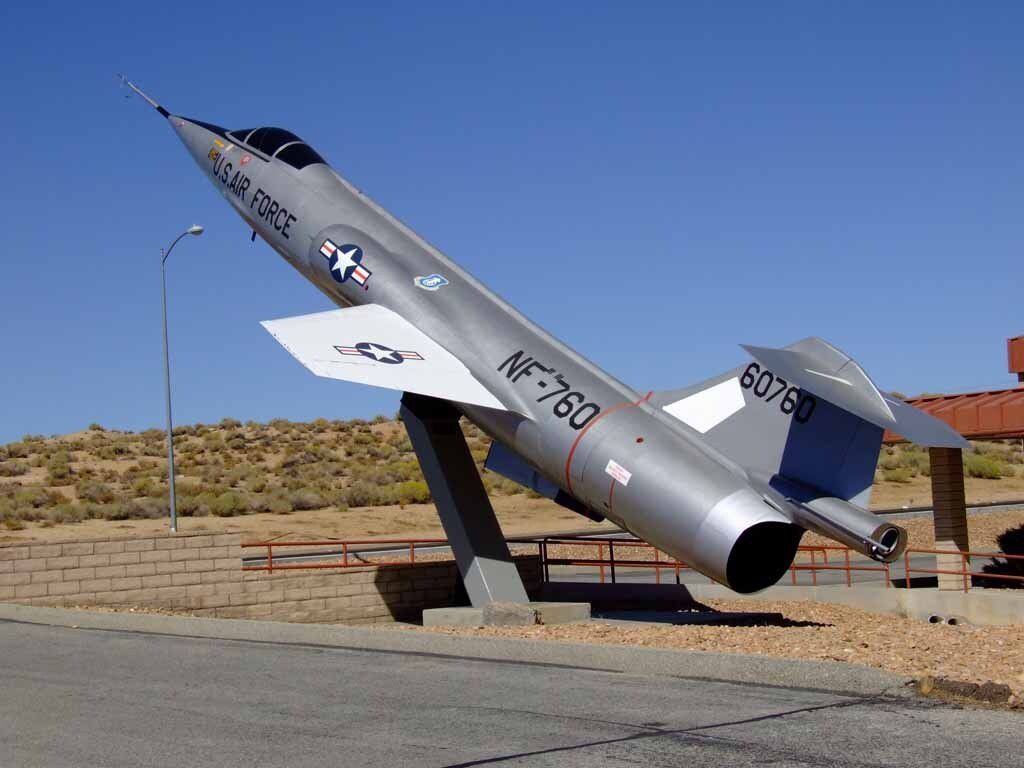Yeager, the ARPS & the NF-104
The Aerospace Research Pilot School
The photograph below is of the 3rd ARPS Class. Left to right (Front row) Edward Givens, Tommie Benefield, Charles Bassett, Francis Neubeck & Michael Collins. Back row; Alfred Atwell, Neil Garland, James Roman, Alfred Uhalt & Joe Engle.

The USAF Aerospace Research Pilot School (ARPS) was founded at Edwards AFB to train Air Force pilots as Air Force astronauts. The school opened its doors to the first class of students in 1961, the recently promoted Colonel Yeager was appointed as the schools Commandant in 1962 and served as the schools Commandant for four years. The school remained open until July 1, 1972 when it was re-designated the USAF Test Pilot School. Some of the subjects covered in the training included Astrophysics & Orbital Mechanics. To gain admission to the school, the students had to already have graduated from the USAF Test Pilot School. Only the best & brightest were admitted to the ARPS. By Yeager's own admission, they were the top 1% of the graduates from the Test Pilot School and he freely admitted that “Hell, most of the kids in our school could bury me academically, although there was plenty I could teach them about precision flying”.
Boeing X-20 Dyna-Soar
The photograph above is signed by all 6 Dyna-Soar pilots; Pete Knight, Russell Rogers, Henry Gordon, Al Crews, Milt Thompson & James Wood.
The schools instructors included Frank Borman, Tom Stafford & Jim McDivitt who went on to become famous astronauts. In the early 1960’s the USAF had two manned space flight programs in the infancy stage. One of these was the Boeing X-20 Dyna-Soar. The X-20 would be a one-manned semi lifting body craft launched into orbit atop a Titan IIIC booster. From launch to orbital injection would take approximately 9 minutes. Orbit would be reached at 550,000 feet and orbital speeds would be in the region of 16,670mph. The X-20 was designed to provide a piloted manoeuvrable vehicle for conducting experiments in the hypersonic and orbital flight regime. Five of the six pilots selected to fly the program were graduates of the ARPS. The five pilots were; Capt. Albert Crews, Maj. Henry Gordon, Capt. William “Pete” Knight, Maj. Russell Rogers and Maj. James Wood. The sixth pilot was NASA’s Milton Thompson. Due to budgetary constraints, Secretary of Defence McNamara officially cancelled the X-20 program on December 10, 1963.
Slideshow below of X-20 program photographs.
Maj. Michael Adams
The graduates of the School included Maj. Mike Adams who was so bright that he had the envious opportunity to choose from flying the X-15 & becoming a NASA astronaut. Adams chose the X-15 program and made seven flights in her and took her out to Mach 5.59 (3,822mph) and to an altitude of 266,000 feet. Sadly Adams lost his life in the X-15 on November 15, 1967. While coming back down from altitude the airplane entered a hypersonic spin at Mach 5 and 230,000 feet. The ship spun down to 125,000 feet and at this point the aircraft entered a conventional dive. But high frequency pitch oscillations began and this pushed the aircraft to +/- 15g, which was beyond the X-15’s maximum G tolerance of +7.33g and –3g design limits. Seconds later the aircraft disintegrated and Adams unfortunately did not survive. Maj. Mike Adams was awarded astronaut wings posthumously for this flight, as the maximum altitude attained was over 50 miles.
Mike Adams with the X-15
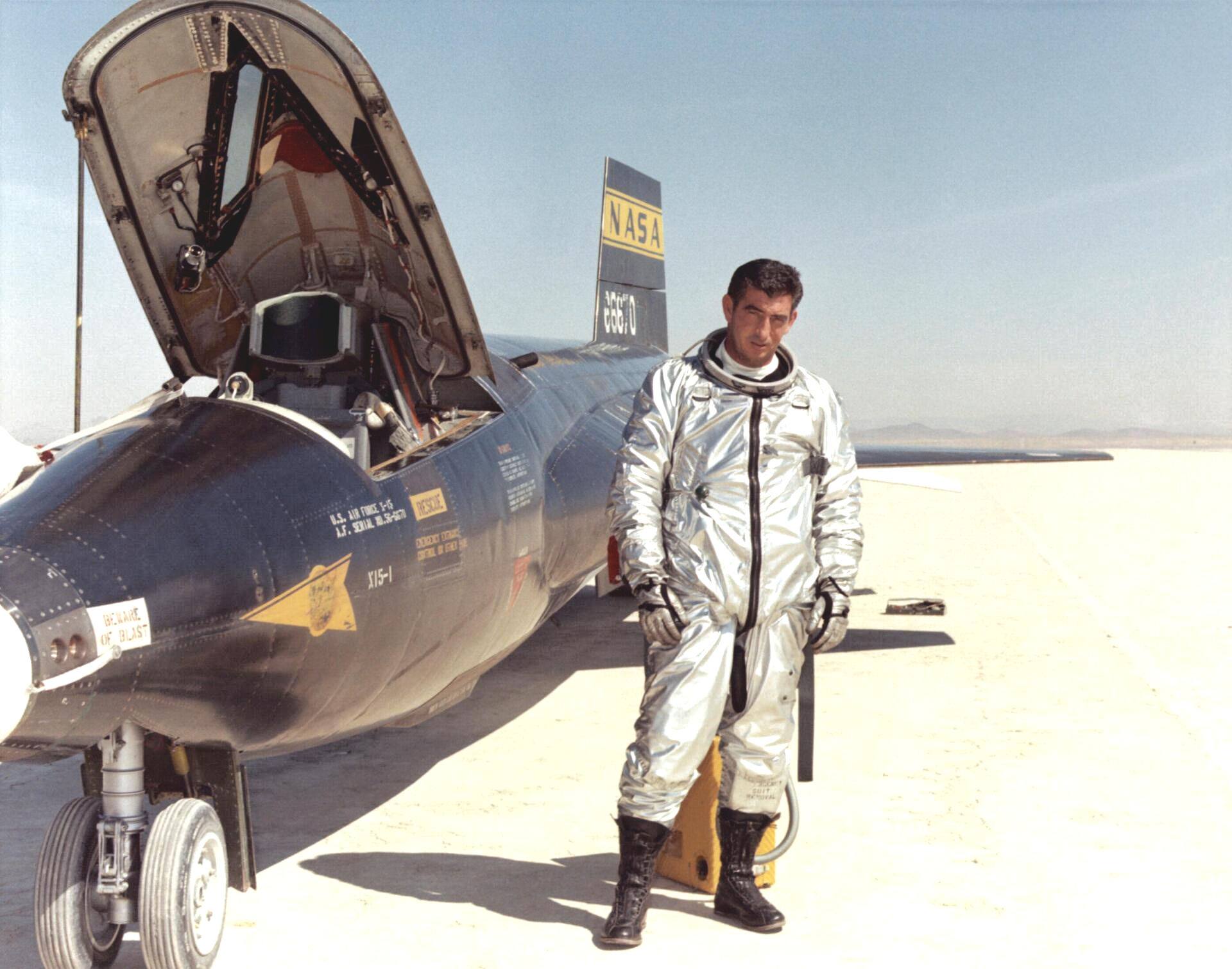
Lockheed NF-104A Aerospace Trainer
Slideshow of NF-104A Photographs
Movie Clip above recently released by Edwards AFB of Yeager's NF-104A crash - Courtesy AIRBOYD via YouTube
Yeager procured for the school three specially adapted Lockheed NF-104A Starfighters. The NF-104A was an F-104A with a 6,000lb-thrust rocket mounted in the tail just above the jet tail pipe. To enable the NF-104 to fly in the stratosphere, the airplane was equipped with hydrogen peroxide thrusters in the nose; tail and wings to control pitch, roll and yaw. The aircraft was tested by Lockheed test pilot Jack Woodman to Mach 2.6 and 118,400 feet altitude.
Going for another record
Yeager wanted to establish operating parameters for the aircraft before the schools students began to fly them. While he was at it, Yeager wanted to establish a new altitude record. On the morning of December 10, 1963 Yeager took the NF-104 up to 108,000 feet. Yeager describes it as “a beautiful flight”. Chuck’s mom was visiting and together with Yeager’s wife Glennis, had lunch with Chuck on the base. After lunch, Yeager took to the air in the NF-104 again and at 37,000 feet Yeager ignited the rocket motor and began to zoom up at a 70º angle of attack. The jet engine flamed out at 60,000 feet and the rocket carried Yeager up to an altitude of 104,000 feet. At the top of its long arc, the airplane began to push over, but as the angle of attack reached 28º, the nose of the nose of the airplane began to pitch up. Using the thrusters had no effect (one of the thrusters under the nose had stuck in the open position) unlike his morning flight where the same situation occurred. The airplane went into a flat spin at 104,000 feet. Using all his know-how, Yeager tried everything he could think of to recover control. Without engine Rpm’s there was no hydraulic pressure to operate the avionics. Yeager even tried the spin recovery ‘chute, which got the nose down, but as soon as the ‘chute was released, the nose pitched up again. Yeager said “The data recorder would later indicate that the airplane made fourteen flat spins from 104,000 feet to impact on the desert floor. I stayed with it through thirteen of those spins before I punched out. I hated losing an expensive airplane but I couldn’t think of anything else to do”.
Ejecting in his full pressure suit (the first time an ejection was attempted with such a suit), Yeager and the seat parted company and he began his fall. Somehow when the ‘chute deployed the seat became entangled in the parachute lines. When the ‘chute popped, the seat smashed through Yeager’s helmet visor. There was still residual fire (solid rocket propellant) in the seat rocket motors and that set fire to the pure oxygen still flowing in Yeager’s helmet. Yeager’s face was in the middle of a goddamn inferno. Choking to death on the smoke and stench from his own burning flesh, Yeager somehow managed to push up what was left of his visor and that shut off the oxygen supply.
Bud Anderson witnesses yet another Yeager bailout
Flying chase for chuck on this flight was Chuck’s good friend Colonel Clarence E “Bud” Anderson in a T-33. Anderson was not the designated chase pilot for that flight but as Yeager’s chase pilot aborted due to a nose-wheel shimmy, Bud came on the radio loop as he knew Chuck’s flight would be cancelled without a chase plane “Hey, I’m right over the field and I’ll chase for you”. After bailing out at 14,000 feet, Yeager hit the ground hard and managed to wave to Anderson on his second go around (Anderson thinking Yeager was okay at this point). A motorist on Highway 6 came to assist Yeager, when the poor guy got near Chuck he turned his head away and was nearly sick. Yeager’s face was charred meat. Yeager asked the motorist for a penknife to cut off his glove as the pain from his hand was excruciating. While cutting away the rubber lined glove, part of two burned fingers came of with it. That DID make the guy puke. The chopper arrived soon after and took Chuck back to the base and he was admitted to hospital. It looked as though Yeager would lose the sight in his left eye. But while the Doctor was poking at the baked crust of blood, Yeager could see light. If it were not for the baked crust of blood, Yeager would have lost the sight from his left eye. His Doctor, Stan Bear notified the Yeager’s that to prevent scarring, he would have to hurt Chuck by scraping off the scabs every four days. The pain of this procedure was the worst Yeager had ever encountered. Yeager stayed in hospital for a month and it is thanks to Doc. Bear that today the skin on his face is perfect with only a few criss-cross scars on his neck. Six weeks after the accident, Yeager was restored to flight status. A truly brave and remarkable feat.
I have been fortunate to be sent a piece of the wreckage of the NF-104A recovered from its desert crash site by Christopher L. Freeze. Thanks a million Chris. You can find out more about the crash site and see photographs taken of the wreckage at the check-six.com website. The site has been put together by Christopher L. Freeze.
The week before his accident in the NF-104 Yeager was the first Air Force Pilot to fly NASA’s M2-F1 Lifting Body.
Further reading on the NF-104:
NF-104 test pilot Bob Smith's outstanding website
